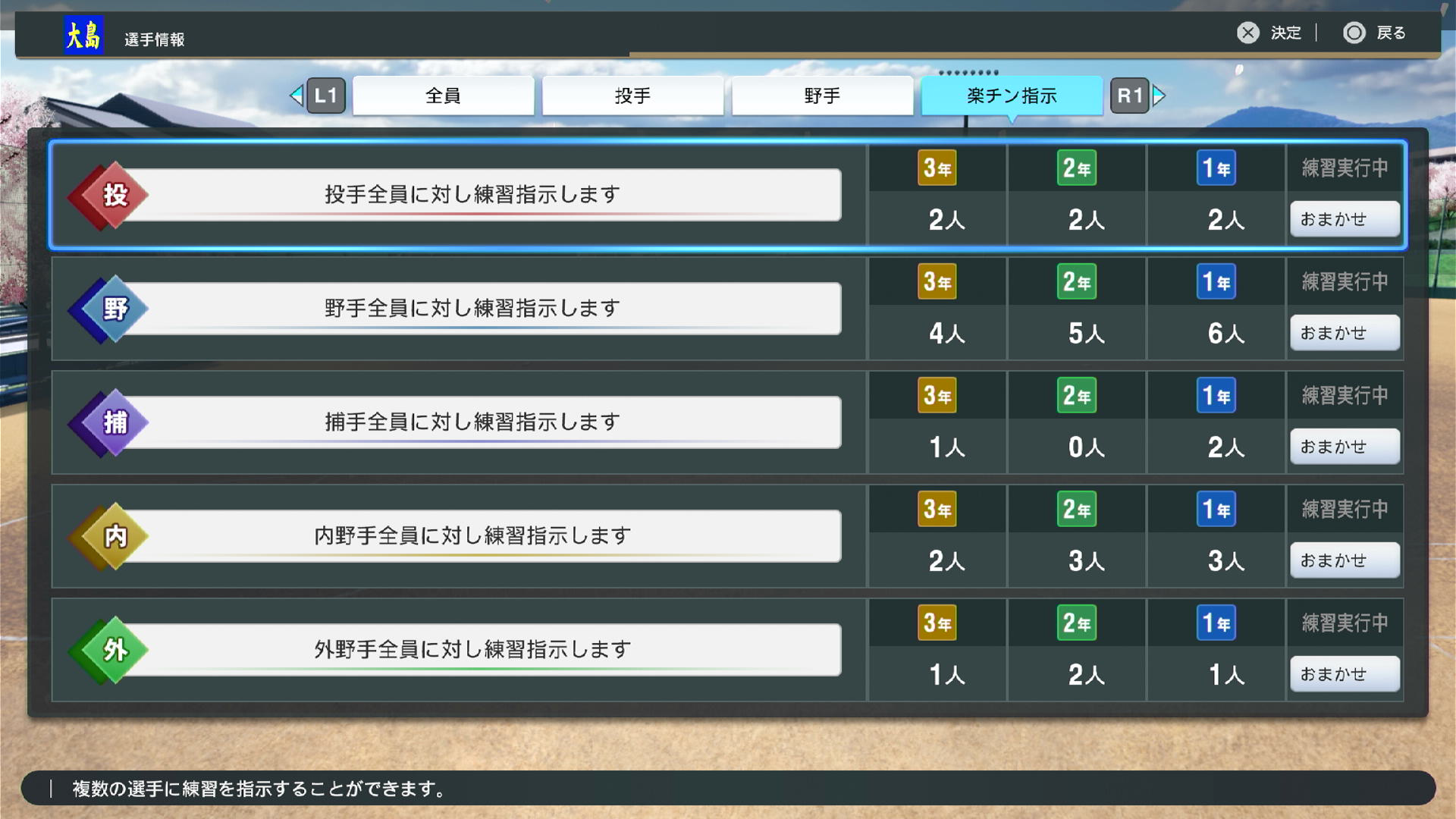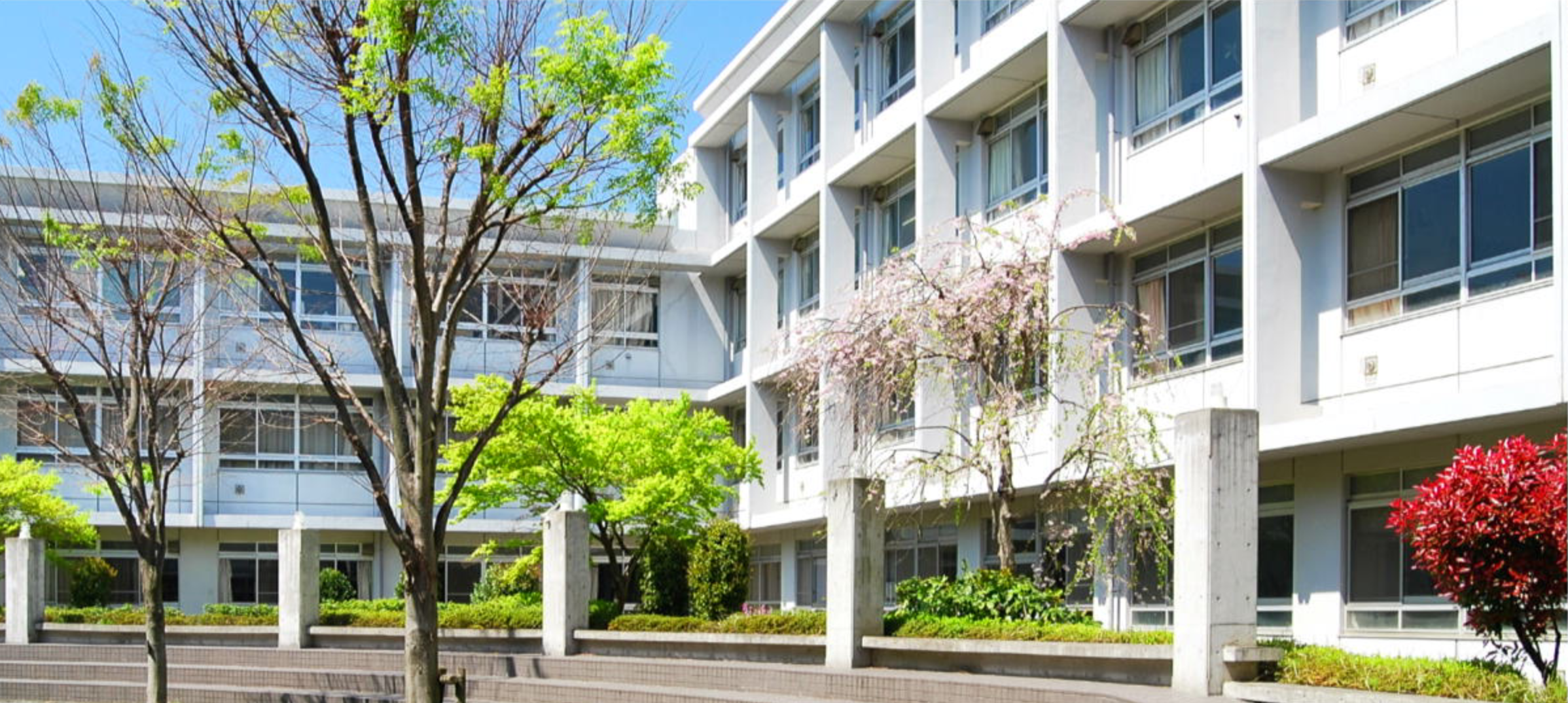Introduction #
A huge piece of the Hakkyuu no Kiseki mode is selecting which aspects of the game each player should work on. Do you want to have a team of speedy slap hitters and defensive wizards, big power guys, ace pitchers, or something in between? (Probably something in between… but it’s up to you!) Here’s how you develop the team that you want.
Roster Screen #

You’ll do all of this through the roster menu in the smartphone. Hit L1 on the dashboard screen and then choose the second icon on` the top row to view the roster. We’ll look at one of my pitchers, Fukushima, and one of my hitters, Takeshi Yuasa (I have two players with the surname Yuasa, so they each get their give name’s first character in the nameplate to distinguish them).
Note: The roster screen actually has four pages, accessible on PS5 with the left half of the touchpad. See the button prompts in the top right of the screen (ページ切替)
Common Information #
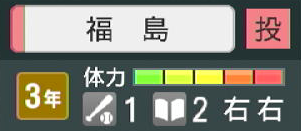
All pages show several common pieces of information on the left side of the player row for both pitchers and hitters:
-
Name
福島 - Fukushima
-
Position
投手 - Pitcher
-
School Year
3年 - 3rd year, i.e., a senior in Japanese high school
-
Current Fatigue Level
体力 - 5/5 energy, i.e., not fatigued at all
-
Learning Items Applied
One piece of equipment (the bat and ball icon), and two books
-
Handedness/Dexterity
Right handed thrower (first character), right handed batter (second character).
Right: 右, Left: 左
Page 1 #
The first page shows the following stats:
Pitchers #

- Top Speed (球速)
- Stamina (スタミナ)
- Fatigue Recovery (疲労回復)
- Pitch Repertoire with Quality - Each pitch is shown by direction on the L-stick when playing
- Current Training Orders (練習実行中)
Hitters/Fielders #

- Contact vs. Right Handers (ミート対右)
- Contact vs. Left Handers (ミート対左)
- Power (パワー)
- Speed (走力)
- Glove Skill (捕球)
- Throwing Accuracy (スローイング)
- Throwing Power (肩力)
- Fatigue Recovery (疲労回復)
- Fielding Skill for Primary Position (守備)
- Separate Catcher Skill for Pitcher Management (捕手)
- Playable Positions (守備位置)
- Current Training Orders (練習実行中)
Page 2 #
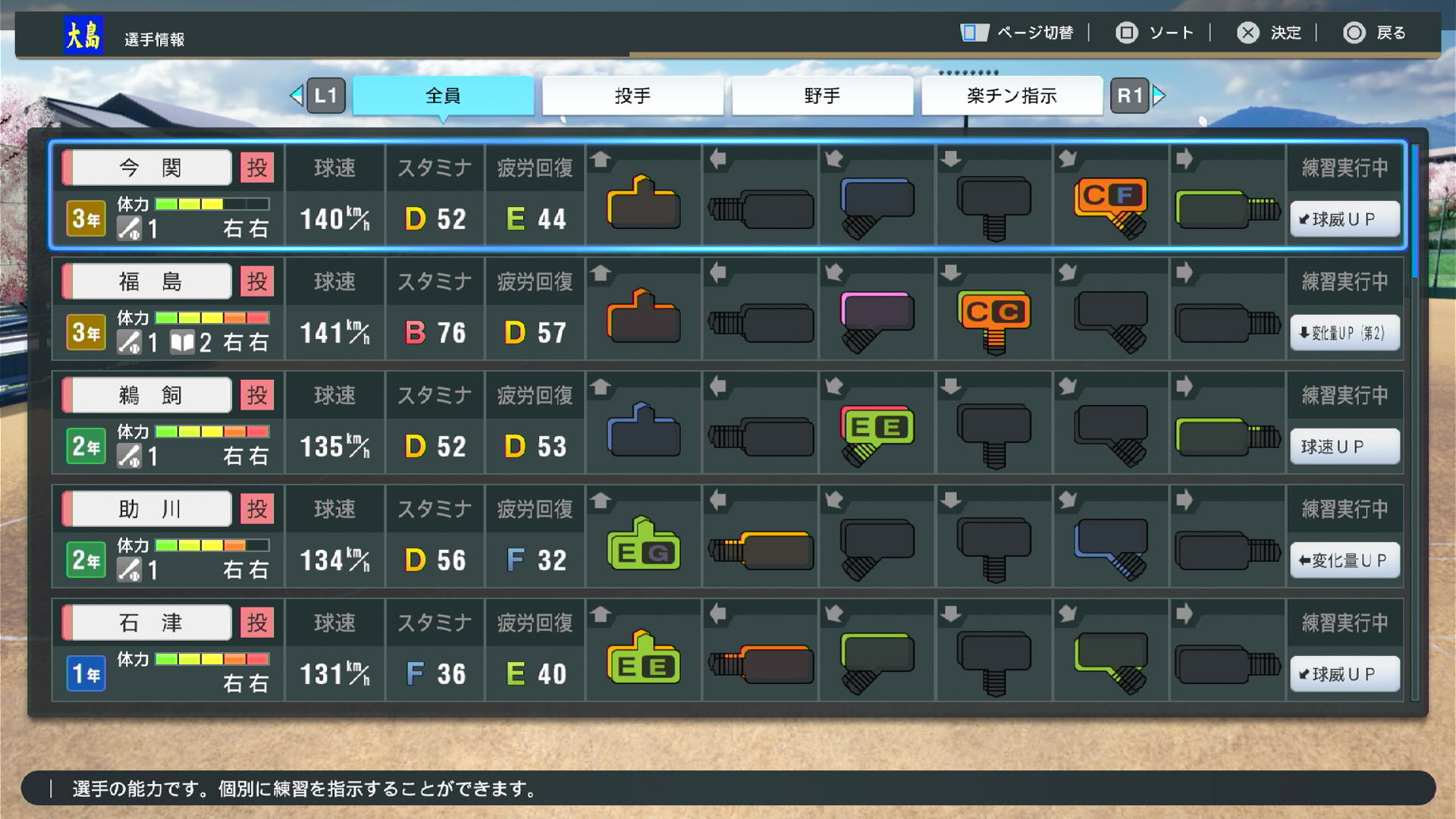
Pitchers #
Pitchers see basically the same as the first page, but you can see the pitch repertoire for directions where you have two pitches. For example if you throw a changeup (down) and a forkball (also down), the changeup would be on the first page, and the fork on the second page. Hitters see the exact same view as page 1.

- Top Speed (球速)
- Stamina (スタミナ)
- Fatigue Recovery (疲労回復)
- Pitch Repertoire with Quality 2nd Page - shown by direction on the L-stick when playing
- Current Training Orders (練習実行中)
Page 3 #
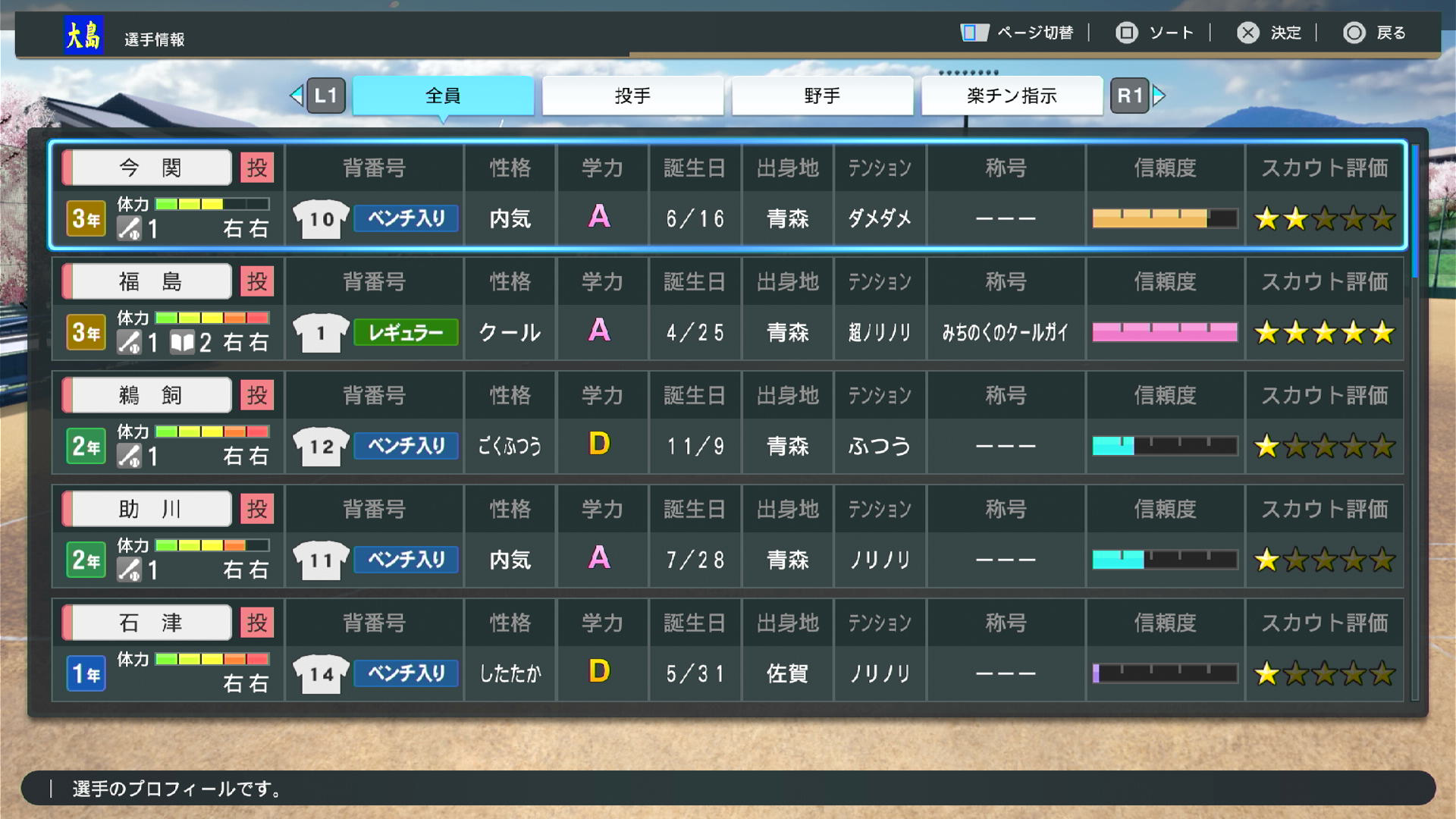
Pitchers and Hitters #

- Jersey Number (背番号)
- Starter/Bench Status - レギュラー (starter), ベンチ入り (bench)
- Personality (性格)
- Scholarship Ability (学力) - increases the number of books you can read, learns special skills more readily, etc.
- Birthday (誕生日)
- Home Prefecture (出身地)
- Current Mood (テンション) - literally “tension”, but it means current attitude or mood
- Title (称号) - over time, players will earn titles through their play
- Reliability (信頼度)
- Scout Rating (スカウト評価)
Page 4 #
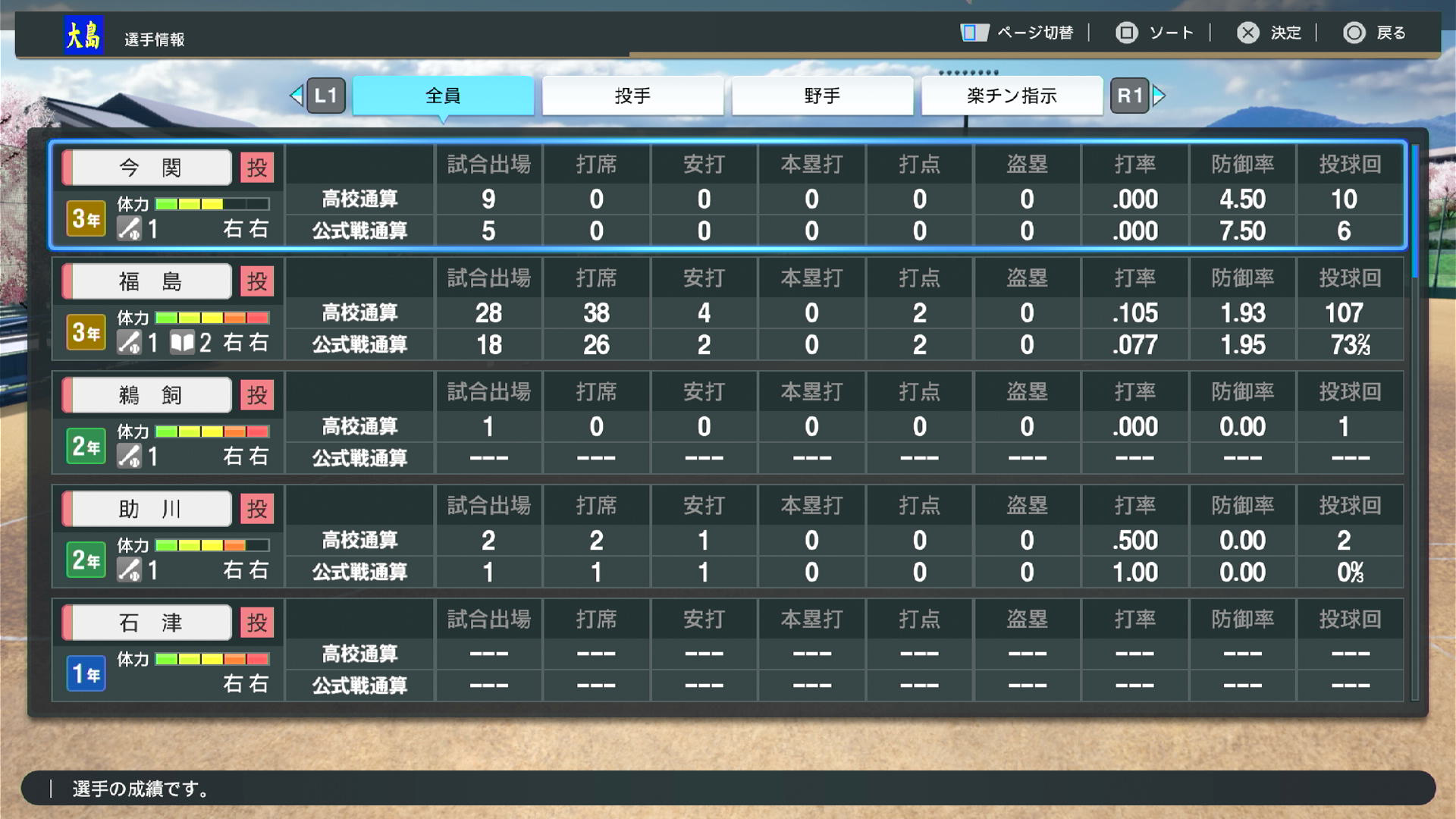
The fourth page is a stats page with stats in all games (高校通算) including practice games in the top row and official games (公式戦通算) in the bottom row.
Pitchers and Hitters #
Pitchers hit in high school, and a lot of pitchers have other fielding positions, so you still have batting stats as a primary pitcher.


- Appearances (試合出場)
- At Bats/Plate Appearances (打度)
- Hits (安打)
- Home Runs (本塁打)
- RBI (打点)
- Stolen Bases (盗塁)
- Batting Average (打率)
- ERA (for Pitchers) (防御率)
- Innings Pitched (for Pitchers) (投球回)
Practice Activity Orders #
So here’s where the rubber hits the road. We’re going to pick some practice orders for my players.
Pitchers #
Let’s take that pitcher, Fukushima to start with. Here’s his first two pages:


So Fukushima is a 3rd year pitcher, right handed, and he throwing a 141 km/h fastball (87.5 mph, pretty legit for high school), has B stamina at 76 points, D recovery at 57 points. He throws a fastball, obviously (the up direction pitch), a curve of some sort (the down-left direction), a forkball (the down direction), and a “vertical slider” (the down direction on the second page).
For each pitch, the first letter is the “sharpness”, i.e., the snap on a slider or similar for other pitches. The second letter is the control, and then there are individual segments for the amount of break an offspeed pitch has. So there are separate measurements for the sharpness of a breaking ball and how much they break. Think of it like a loose slider with a lot of break that breaks smoothly over a longer distance vs. a tight slider that doesn’t break as much, but it snaps hard late in the pitch distance.
Practice Options #
So there are a bunch of practicing options for pitchers, basically one each for all of the pieces of information, including sharpness, control, and break for each of the offspeed pitches, as well as learning new offspeed pitches, and acquiring new traits. Let’s take a look at a couple of examples, top velocity and the break amount on breaking pitches!
Velocity #
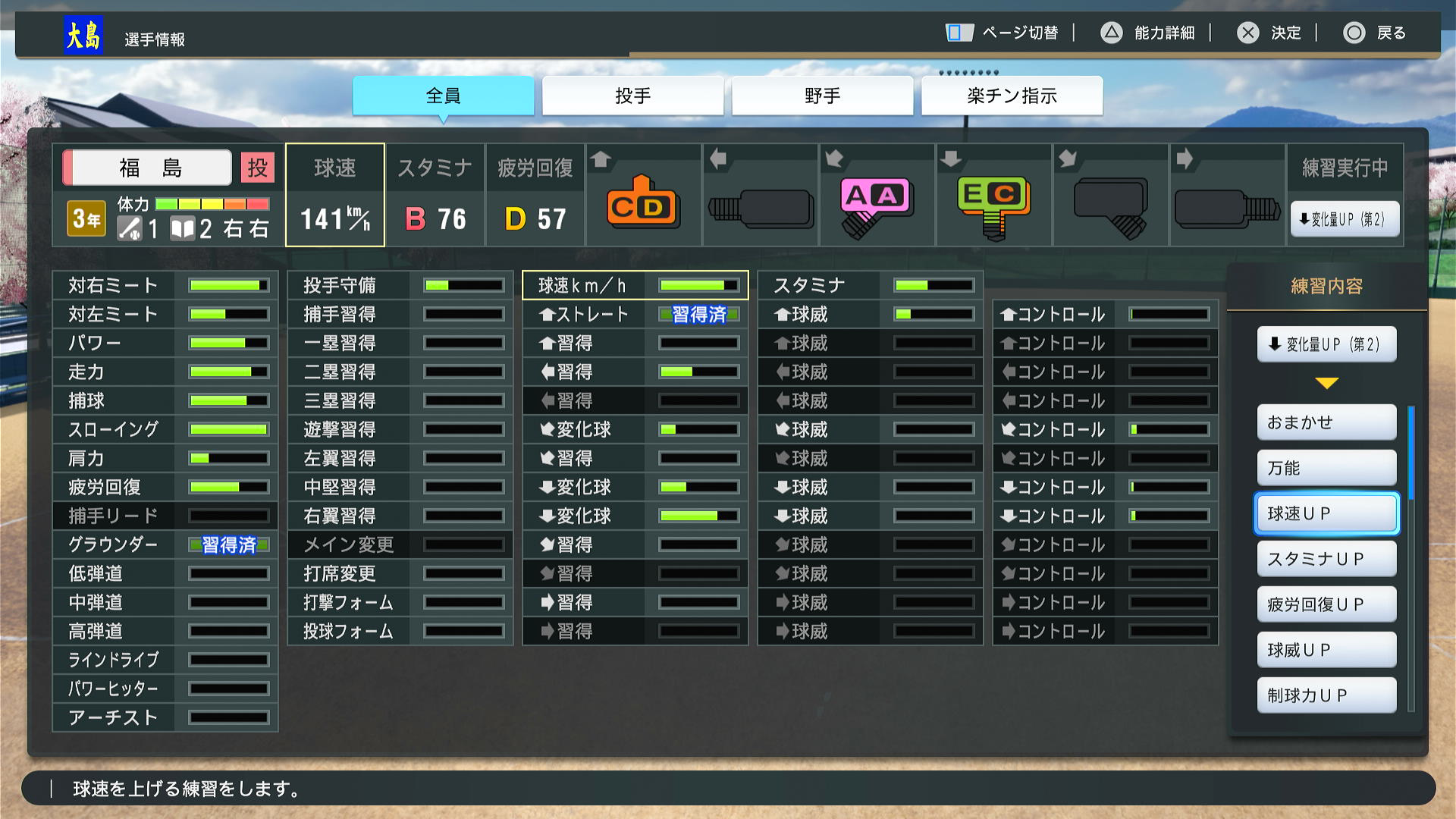
Here’s Fukushima’s details page with the practice order to increase his fastball velocity selected. On the right side, you can see the selected practice item is 「球速UP」. Additionally, in the detail area, you can see the 141 kph stat is highlighted, and the attribute bar is also highlighted, showing that he’s about 80% of the way to getting the next kph. So if I tell him to increase his velocity, sometime in the next, maybe, 3-4 weeks, he should start throwing 142 kph max.
Breaking Ball Break #
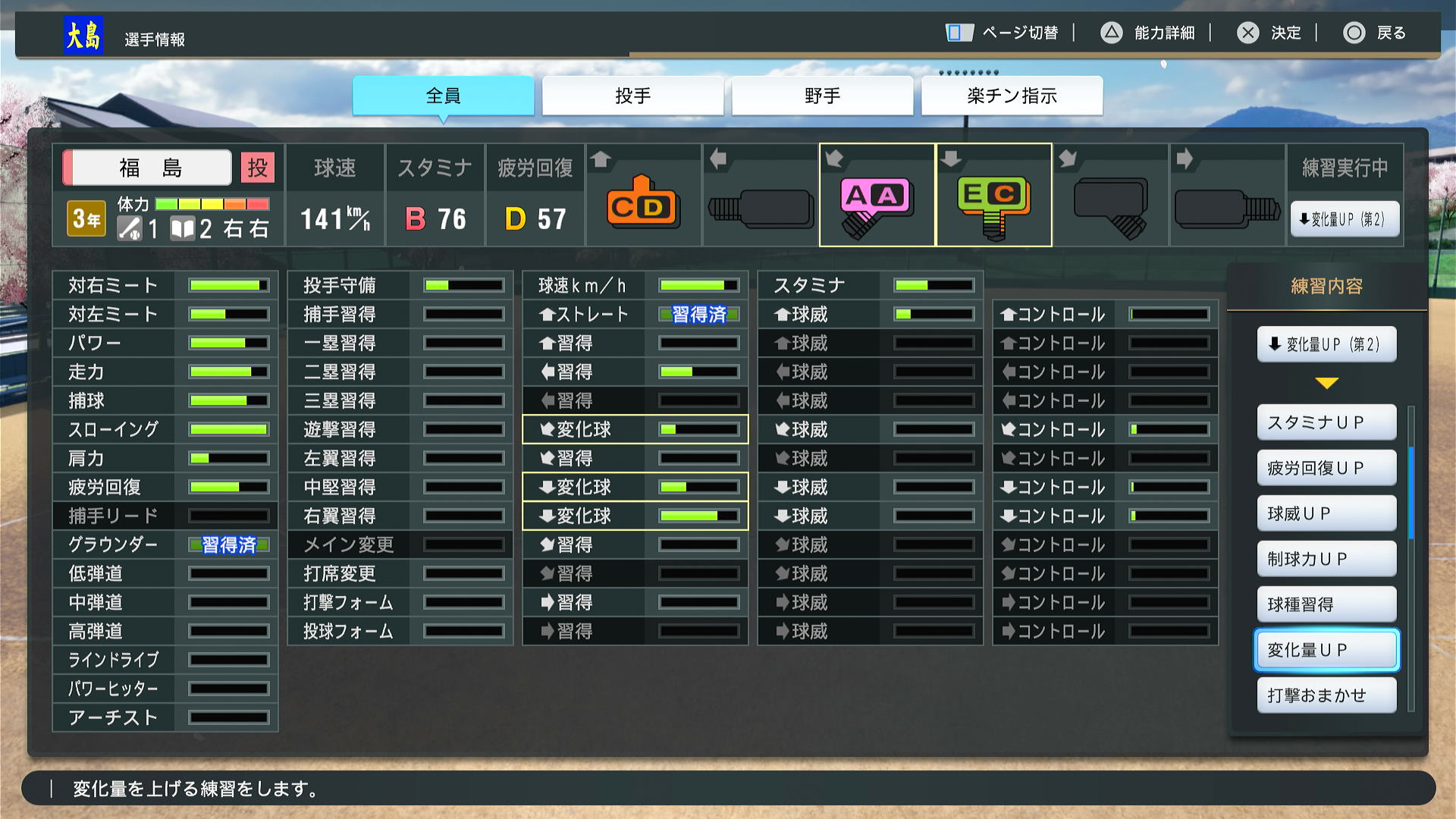
Here’s the same view with the breaking ball break selected. This is a category button, so if I select it, next I need to pick which of his breaking balls I want to work on. As a category button, all of the breaking pitches in the top row, and the breaking ball break attribute bars are all highlighted, because I could select any of them in the next menu. Gaining a rank on a breaking ball also takes a while, as there are only the usual eight ranks (S, A-G).
What I Would Choose #
When I was first starting out, I wanted to have a roster of flame-throwers, so I was leveling up max velo over most other things. Then I started experimenting with fatigue recovery for everyone with the idea that all their other practices would be more efficient once their stamina was consistently higher. Now, for pitchers, I love working on breaking ball sharpness, break, and control. At this point, the A-A curveball, and the C-C down #2 vertical slider are strong pitches. That vertical slider is 75-80% of the way to the next rank, so I’ll probably choose that order until it procs, and then will probably work on the E-C down #1 forkball. The sharpness isn’t strong, so leveling that up to D-rank would be helpful.
That said, this third year player is retiring as soon as I lose a game, and since this is my third year in the program, the team isn’t really that good, so realistically, I’m looking at maybe three more games with this player. So it’s not really a big deal. I probably have five more points total to earn across all of these attributes. Pretty low stakes decisions, here.
All Pitching Practice Orders #
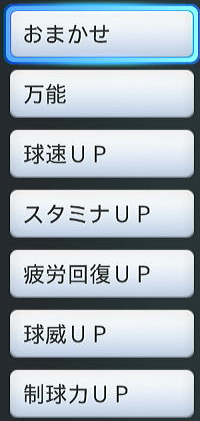
- Omakase - Let the player do what they want
- All-Purpose - General, all-around leveling up
- Increase Max Velocity
- Increase Stamina
- Fatigue Recovery
- Pitch Sharpness Menu - Select the pitch after selecting this
- Pitch Control Menu - Select the pitch after selecting this
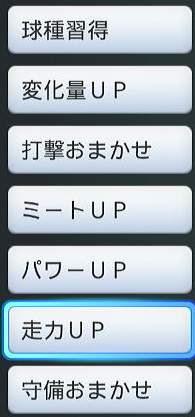
- Learn New Pitch - Select the new pitch after selecting this
- Pitch Break Menu - Select the pitch after selecting this
- Batting Omakase - A combination of contact and power
- Contact Menu
- Improve Power
- Improve Running Speed
- Defense Omakase - A combination of glove skills, throwing accuracy and power, and primary position fielding
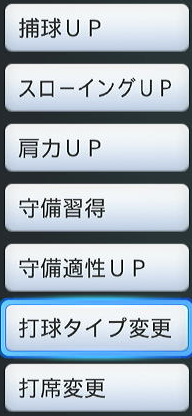
- Glove Skills/Catching
- Throwing Accuracy
- Throwing Power
- Learn New Position
- Improve fielding on existing position
- Change batting type - trajectory/strategy
- Learn switch hitting or hitting from the other side
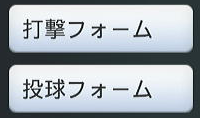
- Change batting stance to square, open, etc.
- Change pitching form to overhand, sidearm, submarine, etc.
Hitters #
We’ll look at that hitter again, Takeshi Yuasa to see the hitter training options. Here is his page:

Takeshi Yuasa is also a 3rd year player, a catcher (捕). He’s a C contact hitter against both lefties and righties, and a D power hitter. He’s slow at an F rating on speed, and a pretty mediocre fielder at D glove skills and E throwing accuracy, power, fielding, and special catching skill. He’s also an E on fatigue recovery, so he takes a while to recover energy. Here are a couple of examples for his training, contact vs. righties, and shoulder strength (throwing power).
Practice Options #
Hitters have slightly simpler practice options because they don’t have a bunch of breaking pitches each with three ratings. We can work on contact vs. right- and left-handed pitchers, power, speed, throwing accuracy and power, glove skills, fielding per position, and a special catcher quality attribute which helps with pitcher management. In addition, there are a number of other skills out there, like the batting trajectory (grounder, liner, fly ball, high fly ball), base stealing ability (separate from speed: It’s more about getting good breaks when stealing and getting good leads), and a bunch of one-off attributes, like 「サヨーナラ男」, which makes a hitter temporarily better when they come up in walk-off situations.
Contact vs. Right-Handers #
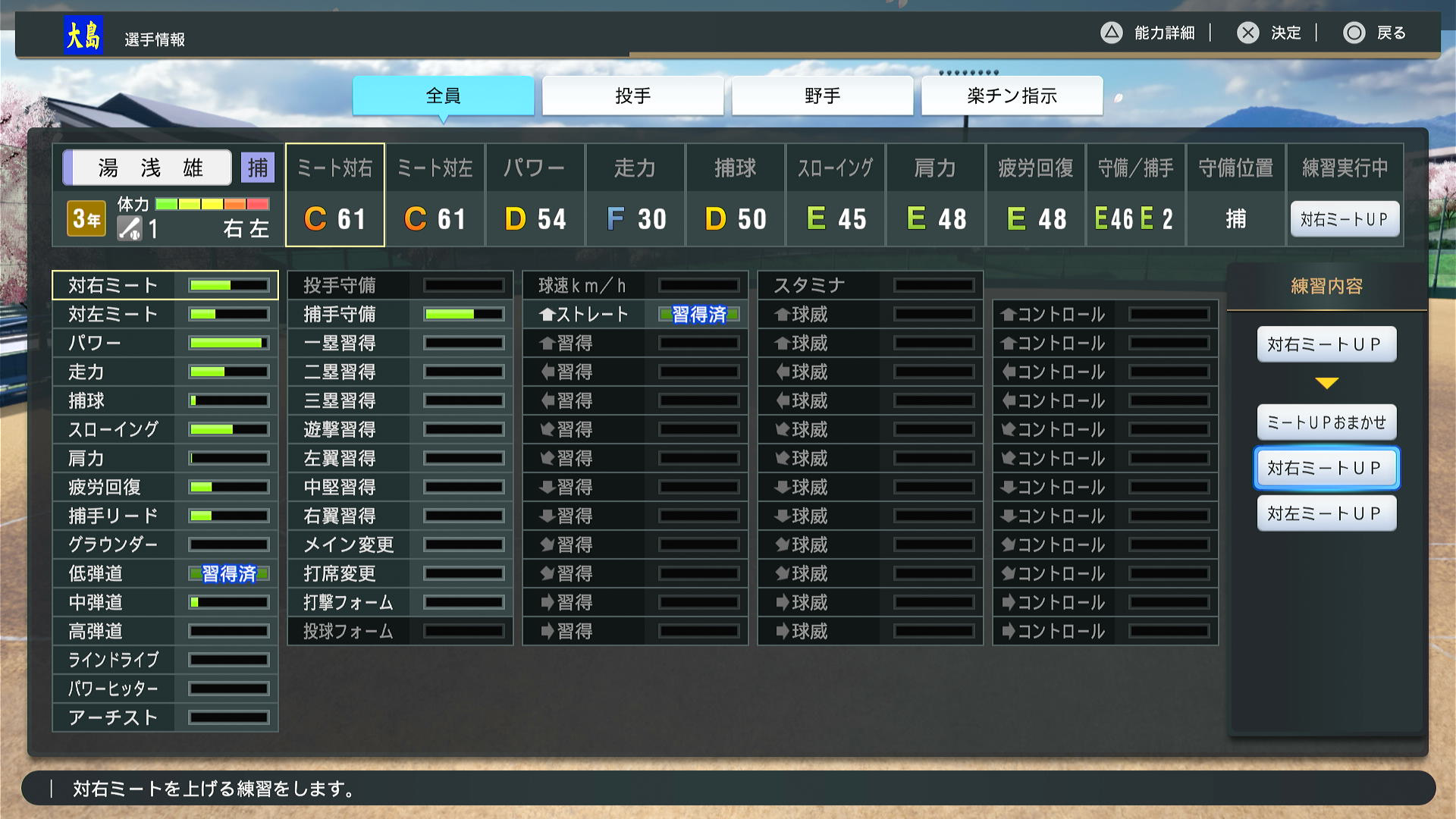
Here, I’ve selected the 「ミートUP」 menu item, leading to this sub-menu where I can select contact vs. righties (「右」) or contact vs. lefties (「左」). You can see that the tile for contact vs. righties is highlighted, as is the attribute meter below showing that I’m about 50% of the way to the 62nd point. Both this and the shoulder strength stat below are on a hundred point scale, so you tend to acquire points faster for these than for the pitcher stats above, since the range is a lot broader. So I ought to be able to get a point every couple of weeks, or a little faster. This varies depending on a ton of different things, like fatigue level, weather, mood/attitude, and probably 15 other things in the game.
Shoulder Strength #
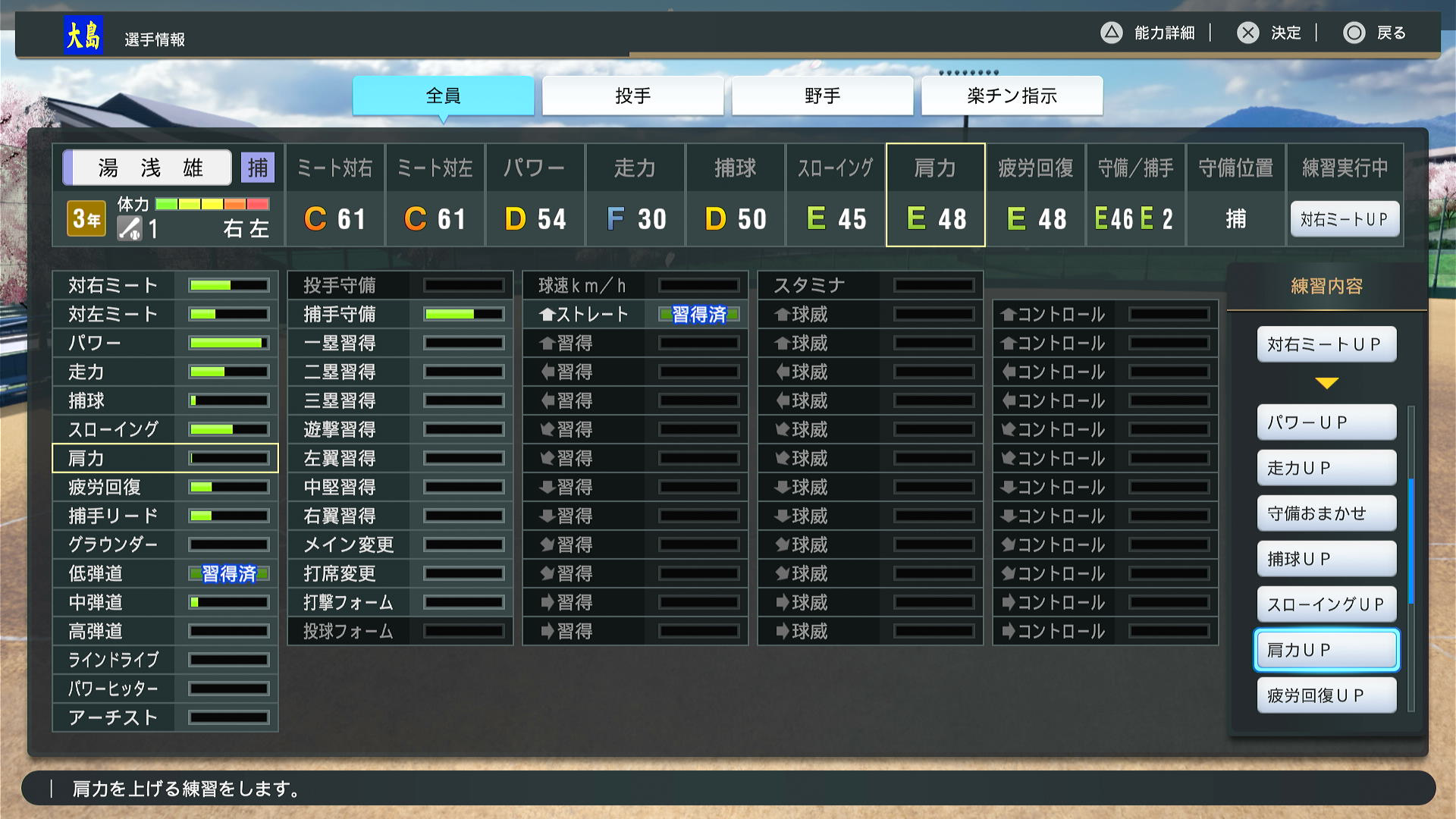
Here’s the shoulder strength (肩力) practice order selected. This is another attribute on the 100 point scale, so I’ll level this up at about the same pace as the contact vs. righties example above.
What I Would Choose #
As I look at this, I see that I’m two points away from the next letter rank in throwing power and recovery. (I actually don’t know if the in-game/sim calculations use the letter or the number, so if it uses the letter, it’s worth it to go from X9 one point up to the next level, but if it uses the number, the difference between 48 and 49 isn’t really significantly different than from 49 to 50.)
It happens to be mid-April, and I’m in the middle of the prefectural tournament, with the regional tourney and others after that if I keep winning. I’d like to get good performance out of my catcher here, so I’d probably level up the recovery stat so I get those 体力 blocks back faster.
Again, this is a 3rd year player, so the stakes are pretty low, and you can’t really mess this up at this point. If I accidentally forgot about a freshman outfielder on catcher quality for three months, I’d probably be mad at myself, though.
All Batting/Fielding Practice Orders #
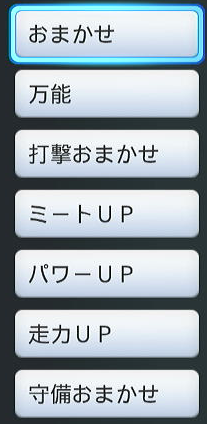
- Omakase - Let the player do what they want
- All-Purpose - General, all-around leveling up
- Batting Omakase - A combination of contact and power
- Contact Menu
- Power
- Running Speed
- Defense Omakase - A combination of glove skills, throwing accuracy and power, and primary position fielding
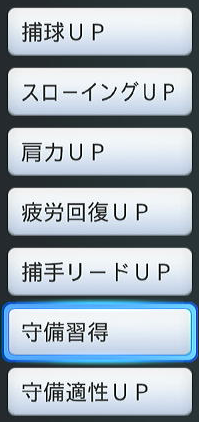
- Glove Skills/Catching
- Throwing Accuracy
- Throwing Power
- Fatigue Recovery
- Catcher’s Skill - Improves pitcher performance while catching
- Learn a new position
- Improve fielding on existing position
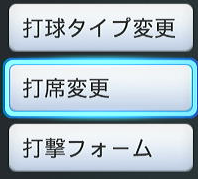
- Change batting type - trajectory/strategy
- Learn switch hitting or hitting from the other side
- Change batting stance to square, open, etc.
Additional Views #
There are three other pages to the roster screen.
- You can view pitching stats, which will show your regular pitchers as well as all your fielders with their terrible pitching skills. Everyone, technically can take the mound and throw straight pitches. The default is fastball at 120 kph (about 75 mph) only, but anyone can receive points in top speed, stamina, or learn a new pitch if you want to develop a new pitcher.
- You can view everyone as a hitter, which will show your pitchers’ batting stats. Some of them might be ok, since high school kids usually haven’t gone pure pitcher or pure fielder by then. Some of the pitchers will be really terrible hitters, though, and since they still have to hit, you might want to level their contact and power up to F at least to give yourself a chance at a couple of extra hits from the #9 slot in the lineup.
- Finally, you can direct practice orders by group, ordering all pitchers to work on top speed, for example, or all hitters to work on contact vs righties. The groups shown in the screen below are, in order: pitchers, all fielders, catchers, infielders, and outfielders. Note that setting all fielders will override each of the other three sub-groups.
